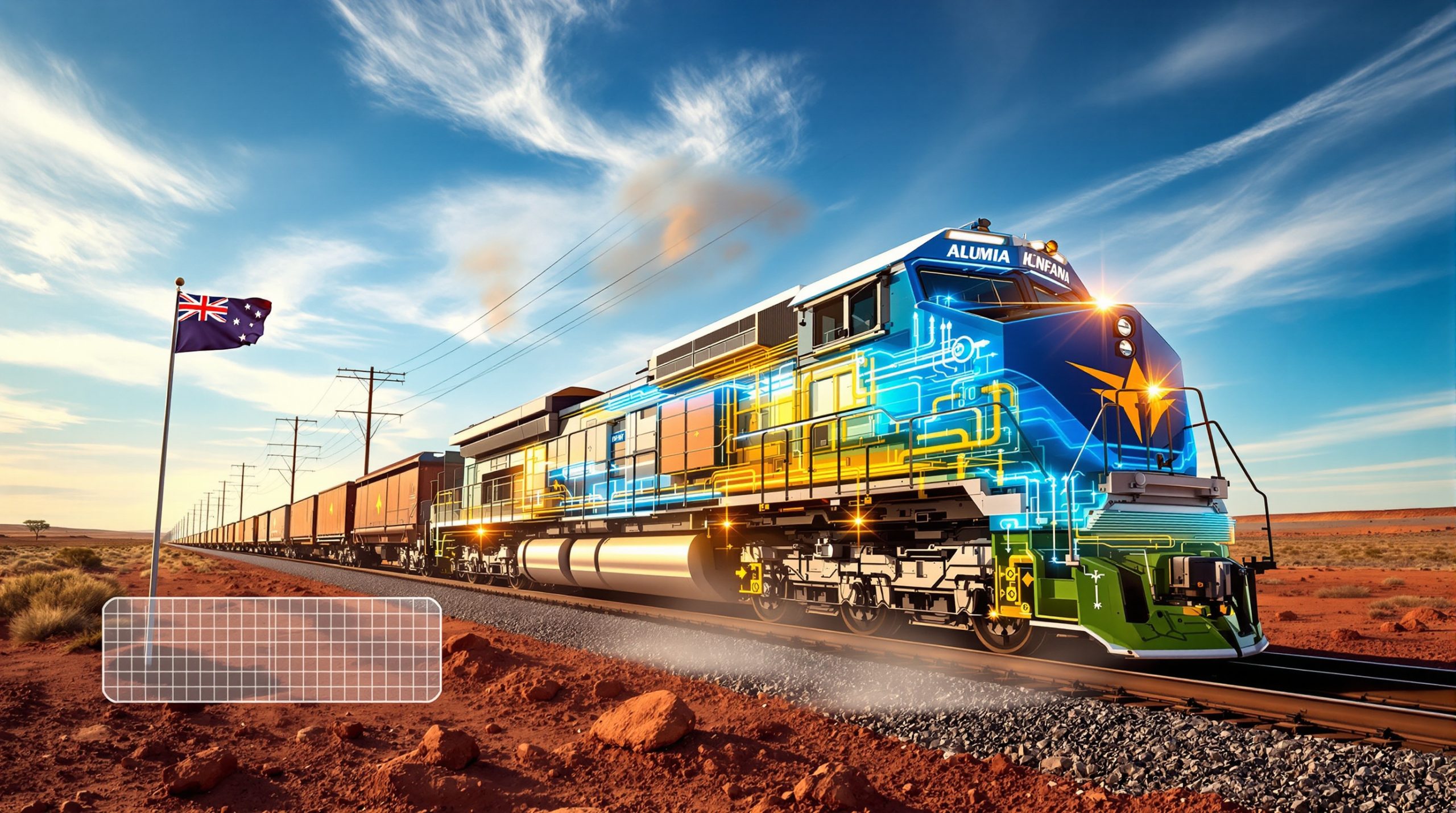Understanding the US Rare Earths Stockpiling Initiative
The rare earths and the US stockpiling initiative is experiencing a seismic shift following reports that President Trump plans to issue an executive order establishing a US rare earths stockpile. This strategic initiative aims to reduce America's dangerous dependence on Chinese supplies of these critical minerals, which are essential for everything from smartphones to fighter jets.
China has long dominated the global rare earths market, controlling approximately 90% of processing capacity and magnet manufacturing. Recent trade tensions have highlighted this vulnerability, with China's export restrictions of rare earth magnets in April 2025 creating significant market disruption.
The market response has been dramatic. MP Materials (NYSE:MP), America's only rare earths producer, saw its share price surge 20% overnight on April 15, while Australian rare earths giant Lynas (ASX:LYC) jumped 13%. This stockpiling initiative mirrors Australia's proposed critical minerals strategic reserve, signaling a coordinated Western response to China's market dominance.
"China's control over separation technology forces Western nations into a position of dependency, creating dangerous supply chain vulnerabilities," notes John Prineas, Executive Chairman of St George Mining (ASX:SGQ), whose company's share price soared 50% following the announcement.
What Are Rare Earth Elements and Why Are They Important?
Rare earth elements (REEs) comprise 17 metallic elements on the periodic table, including the 15 lanthanides plus scandium and yttrium. Despite their name, most are relatively abundant in the Earth's crust but rarely occur in concentrated, economically viable deposits.
The most commercially significant rare earths include:
- Neodymium (Nd) and Praseodymium (Pr): Essential for permanent magnets used in electric vehicles, wind turbines, and defense applications
- Dysprosium (Dy) and Terbium (Tb): Critical additives that allow magnets to maintain performance at high temperatures
- Europium (Eu) and Yttrium (Y): Used in phosphors for displays and lighting
- Cerium (Ce) and Lanthanum (La): Utilized in catalytic converters and glass polishing
Their strategic importance cannot be overstated. The US defense sector alone requires approximately 400 tonnes of dysprosium annually—100% of which is currently imported. Each F-35 fighter jet contains roughly 427kg of rare earth materials, while a single Virginia-class submarine needs nearly 4.2 tonnes.
In the civilian sector, electric vehicles typically use 1-2kg of neodymium-praseodymium (NdPr) in their motors, while larger wind turbines may contain up to 600kg of rare earth magnets. Apple's iPhone 15 contains at least seven different rare earth elements.
Andrew Reid, CEO of Brazilian Critical Minerals (ASX:BCM), emphasizes that "the transition to green energy is entirely dependent on securing stable rare earth supplies, particularly for the high-performance magnets that drive electrification."
Why Is the US Planning to Stockpile Rare Earths?
The US stockpiling initiative represents a direct response to China's strategic weaponization of the rare earths supply chain. In April 2025, China imposed new export restrictions on rare earth magnets, following earlier restrictions on processing technology.
This move wasn't unexpected. China has previously leveraged its rare earths dominance during geopolitical tensions, most notably restricting exports to Japan in 2010 during territorial disputes. What's different now is the scale of Western dependency and China's expanded control throughout the entire value chain.
The vulnerability became painfully clear when MP Materials, which operates the Mountain Pass mine in California, was forced to halt shipments to China due to punitive 125% tariffs. Despite producing rare earth concentrate domestically, MP Materials still relies on Chinese facilities for processing—a critical gap in the Western supply chain.
Lynas Corporation, the largest non-Chinese producer, faces similar challenges. Although it operates the Mt Weld mine in Australia and a processing facility in Malaysia, the company still encounters bottlenecks in producing finished magnets at scale.
"Western countries have invested heavily in mining capacity," explains John Prineas, "but the processing gap forces continued dependency on China. The rare earths and the US stockpiling initiative acknowledges this vulnerability and aims to create buffer stocks while domestic processing capacity develops."
The Current State of Global Rare Earths Supply Chain
China's Dominance
China's stranglehold on the rare earths market is the result of decades of strategic investment and policy support. Beyond controlling 90% of processing capacity, China also dominates magnet manufacturing, which represents the highest-value segment of the supply chain.
This dominance stems from several factors:
- Technical expertise in separation and processing technologies
- Lower environmental compliance costs (though this is changing)
- State support through subsidies and research funding
- Vertical integration from mining through to end products
Chinese companies have also secured strategic positions in non-Chinese assets. Shenghe Resources, for instance, holds a 9% stake in MP Materials and previously maintained an offtake agreement for Mountain Pass concentrate until January 2024, when tariffs disrupted this arrangement.
China's recent implementation of 125% tariffs on US products signals its willingness to use rare earths as a geopolitical tool. The country has also implemented export restrictions on processing technology and established a new state-owned entity, China Rare Earth Group, to consolidate control over domestic producers.
Limited Western Production Capacity
Outside China, Western production capacity remains severely constrained:
- Mountain Pass (US): America's only rare earths mine, operated by MP Materials, produces approximately 15% of global rare earth oxides but can currently process only about 50% of its concentrate domestically
- Lynas (Australia): Produces around 12% of global REEs outside China, with operations at Mt Weld and a processing facility in Malaysia
- Nascent projects: Several companies are developing projects in Australia, Canada, and Brazil, but most remain years from production
The technical challenges in establishing complete Western supply chains are significant. Rare earth separation requires specialized solvent extraction processes, with each element requiring specific chemical pathways. Building these facilities takes time—MP Materials' Texas magnet plant has already been delayed to 2026 due to technical hurdles.
David Franklyn of Argonaut Funds notes: "The gap between mining and magnets is where China maintains its greatest advantage. Western companies are racing to close this gap, but it's measured in years, not months."
How Is Brazil Emerging as a New Rare Earths Powerhouse?
Brazil's Rare Earth Potential
While China and Australia have dominated rare earth headlines, Brazil has quietly emerged as a potential game-changer with the world's third-largest rare earth reserves. The country's resources include both traditional hard rock deposits and the highly sought-after ionic clay deposits similar to those in southern China.
The Brazilian government's MAGBRAS initiative represents a significant step toward establishing domestic rare earth magnet production. This consortium aims to produce 5,000 tonnes of NdPr magnets annually by 2027, with automotive giant Stellantis as a key partner and offtake customer.
St George Mining's Araxá project exemplifies Brazil's potential, with a substantial resource of 40.6Mt at 4.13% TREO (Total Rare Earth Oxides)—a grade that rivals or exceeds Lynas' Mt Weld deposit. John Prineas highlights that "Araxá's hard rock deposit offers a resource that's approximately double the size of Lynas' initial Mt Weld reserve."
Other significant projects include:
- Brazilian Critical Minerals' Ema project: A low-cost development with US$55 million capex and operating costs of US$6.15/kg TREO
- Meteoric Resources' Caldeira project: 1.5 billion tonne resource at 2,359ppm TREO with significant heavy rare earth content
- Axel REE's Caladão project: Reporting strong drilling results of 14m at 3,921ppm TREO from surface
- Viridis Mining and Minerals' Colossus project: 389Mt at 2,204ppm TREO
Hard Rock vs. Ionic Clay Deposits
Brazil's rare earth potential encompasses both hard rock and ionic clay deposits, each with distinct advantages and challenges.
Hard rock deposits like Araxá typically feature:
- Higher grades (often 3-6% TREO)
- Lower strip ratios (approximately 1:1 compared to 3:1 for ionic clays)
- Longer mine lives (20+ years versus 10-15 years for ionic clays)
- Lower environmental footprints
- More straightforward permitting processes
Ionic clay deposits, like those developed by Meteoric Resources and Brazilian Critical Minerals, offer:
- Lower processing costs
- Simplified extraction (often using in-situ leaching)
- Higher proportions of valuable heavy rare earths
- Lower capital expenditure requirements
John Prineas notes that "Araxá's hard rock mineralogy allows for faster environmental approvals compared to ionic clay projects, which face greater scrutiny due to potential groundwater impacts."
Which ASX Companies Are Benefiting from the US Stockpiling Initiative?
Major Producers
Lynas Corporation (ASX:LYC), as the largest non-Chinese producer, has seen its share price increase by 13% following the US stockpiling announcement. The company is well-positioned to benefit from Western diversification efforts, having secured a US Department of Defense contract to build a light rare earths processing facility in Texas, complementing its existing Malaysian operations.
The company has also expanded capacity at its Mt Weld mine and opened a new processing plant in Kalgoorlie, Western Australia, creating a more secure supply chain. Despite these advantages, Lynas faces challenges, including delays at its Texas heavy rare earths facility.
MP Materials (NYSE:MP), though US-listed, represents another major beneficiary of the initiative. Following the 20% share price jump, the company has announced plans to accelerate its vertical integration strategy, including the commissioning of its Texas magnet manufacturing facility by 2026.
Brazilian-Focused Developers
Several ASX-listed companies with Brazilian assets have seen dramatic share price increases:
- St George Mining (ASX:SGQ): Jumped 50% following the announcement, with its Araxá project boasting 40.6Mt at 4.13% TREO. The company has established a partnership with the Minas Gerais state government for expedited permitting.
- Brazilian Critical Minerals (ASX:BCM): Developing the low-cost Ema project with a modest US$55 million capex and attractive economics (55% IRR at US$74/kg NdPr). Andrew Reid, CEO, notes that "Ema's low capital intensity and operating costs provide resilience even in volatile pricing environments."
- Meteoric Resources (ASX:MEI): The Caldeira project features a massive 1.5 billion tonne resource at 2,359ppm TREO, with scoping studies indicating potential production of 170 tonnes of dysprosium annually—a critical heavy rare earth under Chinese export restrictions.
- Axel REE (ASX:AXL): Reporting strong drilling results at Caladão (14m at 3,921ppm TREO from surface) and Caldas projects, with further drilling results pending.
- Viridis Mining and Minerals (ASX:VMM): Advancing its Colossus project (389Mt at 2,204ppm TREO) with a focus on heavy rare earth potential.
These companies represent different stages of development, from advanced exploration to preliminary economic assessment, but all have reported significant resource bases in Brazil's emerging rare earths province.
What Makes These Projects Economically Viable?
The economic viability of rare earth projects depends on several critical factors, including capital costs, operating expenses, and the distribution of valuable heavy versus light rare earths.
Brazilian projects demonstrate particularly attractive economics compared to many peers:
- Brazilian Critical Minerals' Ema project reports an internal rate of return (IRR) of 55% at US$74/kg NdPr, with a net present value (NPV8) of US$498 million. The project's operating cost of US$6.15/kg TREO places it in the lowest quartile globally.
- St George Mining's Araxá benefits from existing infrastructure and a high-grade resource (4.13% TREO), significantly reducing both capital and operating costs compared to greenfield developments.
- Meteoric Resources' Caldeira project, despite its lower grade (2,359ppm TREO), compensates with substantial heavy rare earth content, including dysprosium and terbium, which command premium prices.
Resource grades provide a useful comparison:
- St George Mining (Araxá): 4.13% TREO
- Lynas (Mt Weld): 8.6% TREO (Central Lanthanide Deposit)
- MP Materials (Mountain Pass): 7.98% TREO
- Brazilian Critical Minerals (Ema): 2,500ppm TREO (ionic clay)
- Meteoric Resources (Caldeira): 2,359ppm TREO (ionic clay)
Hard rock projects typically require higher grades to offset increased processing costs, while ionic clay deposits can be economically viable at lower grades due to simplified extraction methods.
Expected production volumes of critical rare earths under export restrictions are particularly significant. Meteoric's scoping study indicates potential production of 170 tonnes of dysprosium annually, representing a substantial portion of Western demand outside Chinese supply.
How Will the US Stockpiling Initiative Impact the Market?
The rare earths and the US stockpiling initiative is likely to have far-reaching implications for the market, both in the near term and over the coming decade.
Analysts project price increases of 15-20% for critical rare earths by 2026, with potential spikes for elements under specific export restrictions, particularly dysprosium and terbium. NdPr prices, already trading at US$74/kg, could test historical highs above US$140/kg if supply constraints intensify.
Investment opportunities in non-Chinese supply are multiplying, with Western governments increasingly willing to support domestic rare earth development through:
- Direct funding (e.g., US Department of Defense's US$120 million grant to Lynas)
- Loan guarantees and tax incentives
- Expedited permitting processes
- Guaranteed offtake agreements for strategic stockpiles
The timeline for developing alternative supply chains remains challenging. Even with accelerated permitting, new mines typically require 5-7 years from discovery to production, while processing facilities add another 2-3 years of development time. Western magnet manufacturing capacity is projected to grow 300% by 2030, but from a very small base.
David Franklyn of Argonaut Funds believes "investors systematically underestimate Brazil's potential to disrupt the rare earths market by 2027. The country combines favorable geology with existing mining infrastructure and supportive regulations."
The greatest challenge remains establishing processing capabilities outside China. While mining represents only about 20% of the value chain, separation, refining, and magnet manufacturing capture 80% of the economic benefits. China's decades-long head start in these technologies cannot be overcome quickly, regardless of funding levels.
FAQ: Rare Earths and US Stockpiling Initiative
What specific rare earths is China restricting exports of?
China has implemented restrictions primarily focusing on permanent magnet materials, including processed neodymium, praseodymium, dysprosium, and terbium. Raw material exports face fewer restrictions than value-added products like separated oxides and finished magnets. Furthermore, understanding global commodities insights is crucial to navigate these shifting export policies.
How long would it take to develop new rare earth mines and processing facilities?
Developing new mines typically requires 5-7 years from discovery to production under optimal conditions. Processing facilities add another 2-3 years of development time. Brazil's projects may reach production faster than greenfield developments elsewhere due to existing infrastructure and supportive regulations.
Which rare earth elements are most critical for defense applications?
Defense applications particularly rely on neodymium, praseodymium, samarium, and dysprosium for high-performance magnets used in guidance systems, radar, and communications equipment. Yttrium, europium, and terbium are critical for specialized optics and laser systems. In addition, addressing critical mineral shortages has become a national security priority for Western nations.
How does the US plan to fund its stockpiling initiative?
The initiative will likely be funded through a combination of Defense Production Act allocations, Department of Energy grants, and specific congressional appropriations. The Defense Logistics Agency manages the National Defense Stockpile and would oversee rare earth acquisitions.
What role will private companies play in the US stockpiling initiative?
Private companies will fulfill dual roles: first as suppliers to the stockpile through offtake agreements, and second as developers of domestic supply chains with government support. Companies like MP Materials and Lynas have already secured government funding to expand processing capabilities, while emerging producers in Brazil and Australia are positioned to supply material to the stockpile. As Trump's policy impact continues to reshape markets, many investors are now [investing in mining stocks](https://discoveryalert.com.au/news/investing-in-mining-
Want to Capitalise on the Next Major Mineral Discovery?
Stay ahead of the market with Discovery Alert's proprietary Discovery IQ model, which instantly notifies investors about significant ASX mineral discoveries, turning complex data into actionable insights. Explore how historic discoveries have generated substantial returns by visiting the dedicated discoveries page and begin your 30-day free trial today.




